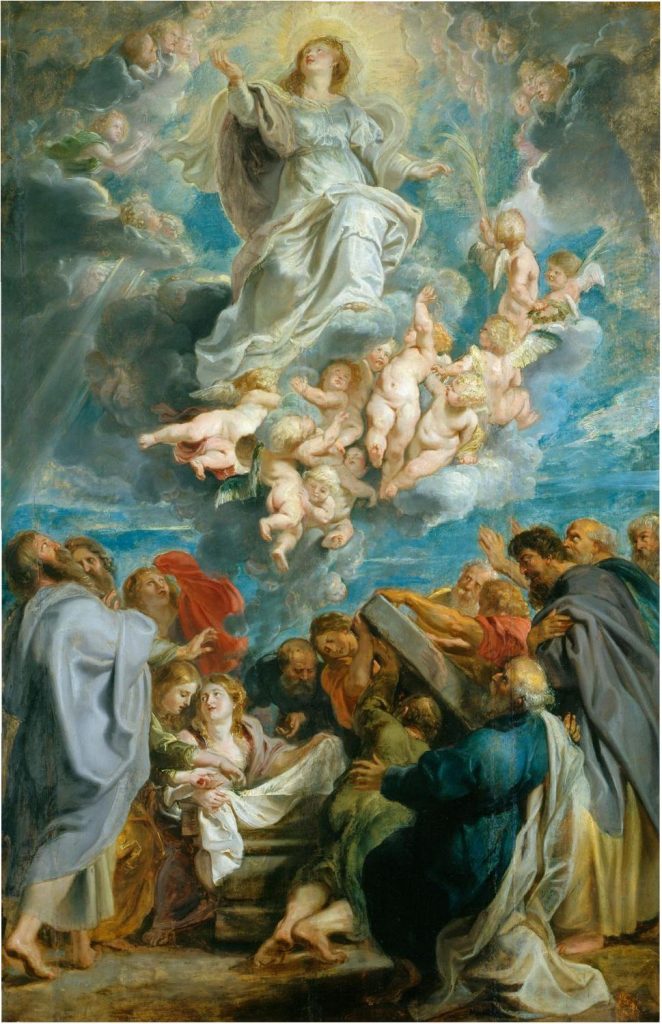Forgiveness: Why?How?
One of the more beautiful and admirable attributes of the saints-but also one that can be a bit dangerous if we are not careful-is their remarkable willingness and even desire to forgive and make excuses for those who cause them harm.
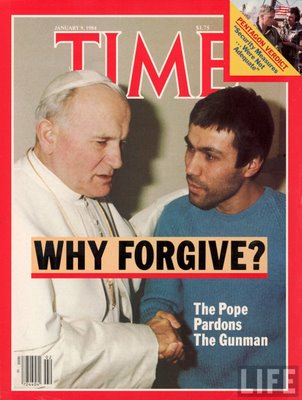
I say beautiful and admirable because it is an imitation of Jesus Christ who, as he experienced the agony of the cross, prayed, “Father, forgive them; for they know not what they do” (Luke 23:34). However plain it seems to us that these persons knew precisely what they were doing, Christ challenges us in our perceptions and cautions us not to judge the intentions we can never fully know. He makes excuses for them and expresses, even in the midst of his suffering, the desire that they be forgiven.
But at the same time, to make excuses for those who do evil can be dangerous. It can allow for its continuation and perpetuate the sin. Psychologists speak of codependency and the consequences of enabling others to continue in their destructive behavior. Certainly Christ is not advocating that. It is a careful balance we must strike, because we believe in a God of unfathomable mercy but also in a God of justice.
A wonderful, and I would say also timely, example for us in this careful balance between forgiveness and justice is Blessed John Paul II (soon to be canonized St. John Paul II). Shot at point blank range in St. Peter’s square in 1981, he nearly died from that assassination attempt. Yet once he had recovered enough to speak he broadcast a message to the entire world: “I pray for that brother of ours who shot me, and whom I have sincerely pardoned.”
That brother of ours? By no means was Blessed John Paul II referring here to the fraternal bond of baptism. The assassin, Mehmet Ali Ajca, was not a Christian. The Pope was simply referring to this person’s dignity as one created in the image of God and, in a certain sense, making excuses by separating the man from the act of destruction he had so deliberately carried out. What is often missed in John Paul’s offer of forgiveness and his subsequent pastoral visit to “this brother of ours” is the fact that Blessed John Paul II was in total agreement that Ajca, who had already taken the life of a journalist, be locked up in jail!
We believe in forgiveness and mercy, but also that dangerous criminals should be kept off the streets. We are not blind to the fact that those who have committed heinous crimes owe a debt to society; their acts of violence have penal ramifications.
Why do I mention these things this morning? Firstly, they are important for us to reflect on because every single one of us, at one time or another, has been hurt by the words or actions of others. What does forgiveness mean for us, and how should we pursue it? On a broader level, as recent as this morning our newspapers display criminals who have committed acts of violence against innocent people; the call for justice, even retribution, echoes from the radio and television news stations daily. As Christians we are called to embrace forgiveness and mercy but by no means are we to forget the demands of justice and the responsibility to make the world a safer place. It is not easy to discern how we should respond to the demands of the Gospel, which Christ and saints like John Paul II have modeled so well for us. In our first reading this morning, however, the patriarch Joseph teaches us beautifully how to begin.
Assumption of Mary
The feast day of the Assumption of Mary, also known as Assumption Day, celebrates the day that God assumed the Virgin Mary into Heaven following her death, according to popular Christian belief. It is the principal feast day of the Virgin Mother.

It is celebrated annually on or around August 15 by many countries, particularly in parts of Europe and South America. Some countries celebrate the day at other times of the year. This day is also known as the Assumption of the Blessed Virgin Mary, the Dormition of the Most Holy Mother of God (in the eastern countries), or the Feast of the Assumption.
What do people do?
Colorful processions through the streets and firework displays mark the celebration of the Feast of the Assumption in Italy, as they do in Italian-American communities throughout the United States. In Sicily and rural areas outside Rome, a bowing procession is the day’s main event. A statue of the Virgin Mary is carried through the town to a ceremonial arch of flowers, where a group of people holding a statue of Christ awaits her arrival. Both statues are inclined toward each other three times, and then the Christ figure precedes the figure of Mary back to the parish church for a special benediction.
In Sao Paulo and other parts of southern Brazil, the feast is called Nosa Senhora dos Navegantes, or “Our Lady of the Navigators”. Pageants are held on decorated canoes, each carrying a captain, a purser, three musicians, and two rowers. They travel to small villages to entertain and feast. Towns may have small church processions with musicians whose costumes and demeanors depict the “Three Wise Men” who are mentioned in the Bible.
In previous years some Italian plazas were flooded. Citizens would ride through the temporary “lakes” in carriages and it was common for people to carry bowls of rose-scented water, which they sprinkled on themselves – possibly a carryover from a pagan ritual in which the gods were petitioned to provide adequate rainfall for the crops, or as a tribute to the pagan goddess Isis of the Sea. Assumption Day is also an important holiday in France where the Virgin Mary has been the patron saint since 1638.
Public life
Assumption Day is a public holiday in countries such as Austria, Belgium, Chile, Croatia, France, parts of Germany, Guatemala, Greece, Italy, Poland, Portugal, Slovenia, Spain and Switzerland (the holiday may be regional or limited to certain groups in Switzerland). However, Assumption Day is not a public holiday in countries such as Australia, Canada, the United Kingdom, and the United States.
Background
Assumption Day commemorates the belief that when Mary, the mother of Jesus Christ, died, her body was not subjected to the usual process of physical decay but was “assumed” into heaven and reunited there with her soul. This holiday, which has been celebrated since the fourth century CE, is a Christianization of an earlier harvest festival and, in many parts of Europe, is known as the Feast of Our Lady of the Harvest.
For centuries celebrations were held in the honor of the goddess Isis of the Sea, who was born on this day according to mythology. With the coming of Christianity church leaders decided that the easiest way to handle this pagan ritual was to simply change it into a Christian holiday, hence the introduction of Assumption Day came forth.
Like the Immaculate Conception, the Assumption was not always an official dogma of the Roman Catholic Church – not until Pope Pius XII ruled it so in 1950. It is, however, a pious belief held by some Orthodox Christians and some Anglicans. It is regarded as the principal feast day of the Virgin Mother.
Symbols
Remnants of the ancient celebration include night time bonfires and public illuminations, both probably symbolic of the sun, in Italy. The idea of prosperity is also evident in the throwing of coins from windows down to the street in some cultures. Symbolic images of the Virgin Mary and her assumption into heaven have been associated with the day. Blue is the color most often associated with the Virgin Mary. It symbolizes truth and clarity, and it is the color of the sky, which symbolizes heaven. The lily, which is a symbol of purity, chastity, and simplicity, is also associated with the Virgin Mary.
Fighting human trafficking
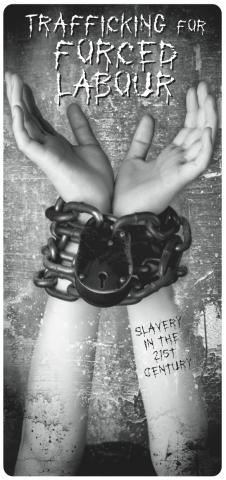
Jesuits in Southeast Asia will be taking a more active role in the fight against human trafficking, which Pope Francis recently called “a despicable activity, a disgrace for our societies, which describe themselves as civilized”.
There was strong Jesuit participation in a recent meeting of major superiors focussed on the issue. Among the participants at the XV Southeast Asia Major Superiors Congress held in Singapore from April 15 to 19 were Jesuits from Malaysia, Singapore, Indonesia, Vietnam, Cambodia and Micronesia. During the meeting, the Indonesian Province and Malaysia-Singapore Region in particular committed to concrete actions in the broad plans developed to combat human trafficking in the various local contexts.
Human trafficking is the fastest-growing crime in the world. An estimated 27 million men, women, children have been made into slaves across the world, and every year, an estimated 800,000 people are forced or sold into slavery.
In its second global estimate of forced labour released in June 2012, the International Labour Organization said there are 20.9 million victims of modern-day slavery at any given time, with Asia Pacific accounting for the largest number at about 11.7 million.
Indonesian Provincial Fr Riyo Mursanto SJ said that the Jesuits will continue to work with and through KOPTARI, the Conference of Religious Major Superiors in Indonesia, on raising awareness of human trafficking in the country and supporting the work of the women religious providing direct care to victims.
Fr Riyo, who is also chairman of KOPTARI, said that in its meeting with the Bishops Conference in August, KOPTARI will strongly emphasise the importance of raising awareness of human trafficking among the diocesan priests and male religious.
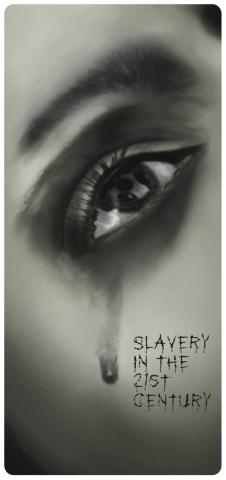
KOPTARI will also support the national networking meeting in July of the Counter Women Trafficking Commission of the IBSI (Indonesia Conference of Women Religious), and efforts by women religious to provide shelters for victims.
Fr Riyo said that the Indonesian Province would also look at opportunities to provide Jesuits in formation with “direct experiences around the complexity of the problem”.
“Families look for happiness. But human trafficking breaks apart close members of the families and brings misery,” said Fr Riyo.
In Malaysia and Singapore, the Society will be collaborating with other religious in the Conference of Religious Major Superiors (CRMS) Malaysia-Singapore-Brunei on efforts in Malaysia and Singapore. These will build on the CRMS’ first modest anti-human trafficking project in 2011 to raise awareness of human trafficking.
Fr Colin Tan SJ, Regional Superior of the Jesuit region of Malaysia-Singapore, who served as chairman for this year’s SEAMS Congress, has agreed to coordinate the fundraising efforts for CRMS initiatives in awareness raising and advocacy and its plans to raise awareness among lawyers, doctors, and business groups. He will also be assisting in efforts to conscientise bishops and priests and encourage them to raise awareness of the issue from the pulpit.
“Human trafficking is a serious issue that concerns the Church in in its social mission and duty to reach out to the weak, the poor, the marginalised, the vulnerable and the exploited,” said Fr Colin. “Following what Pope Francis has said, the ‘church must be in the streets with the poor, to find God among them and to learn from them’.”
The Southeast Asia Major Superiors Congress is held once every three years to encourage and enable networking and collaboration among the Religious in Southeast Asia. The XV SEAMS Congress, which was focussed on human trafficking, drew 33 participants from nine Asian countries, and resulted in broad action plans to combat human trafficking in Indonesia, Malaysia, Singapore, Micronesia, Myanmar, Thailand, and the Philippines.
In a statement issued on April 22, the SEAMS Congress said, “Through the Congress, participants emerged with a strong conviction that we cannot continue to address human trafficking in our present piecemeal way. There is an urgent need for greater networking and collaboration.”
The anti-human trafficking project implemented by the Conference of Religious Major Superiors Malaysia-Singapore-Brunei in 2011 consisted of a set of five brochures on human trafficking, available in English, Chinese and Malay. For more information on the project and to download the brochures, go to http://franciscans.sg/crms/
Catholics at Work

Over a lifetime, work is the single most energy- and time-consuming pursuit of most adults today, for both men and women. Work, whether paid or unpaid, is also a source of identity, community, creativity and meaning for many. Work develops and hones skills, builds character, frames time and sets up a public rhythm. Work challenges assumptions and faith.
How, exactly, does work intersect with faith? Over the last year America has asked practicing Catholics across a variety of fields to describe briefly how they regard their faith and their work when they consider them together. What is the interplay between the two? In what ways has their faith influenced their work? Just as important is this twin consideration: In what ways has their work influenced their faith?
Here we offer a selection of these essays.
“Broadcasting Faith,” William F. Baker
“Business Plan,” Kerry Robinson
“Character Driven,” Peter A. Quinn
“Full Disclosure,” Terrence Berg
“Faith Healing,” Allan Woods
“All God’s Children,” Agnes Nixon
“A Matter of Faith,” Thomas A. Cahill
Jesuit Artists’ Workshop II at Mount Abu
Ten Jesuit artists from six provinces of South Asia gathered at Glen View, Mount Abu on 15 April, 2005 for the second Jesuit Artists’ Workshop (See pic on 15). Five of them were priests, and five scholastics. Three priests were around 60 years old, and all the scholastics at the philosophy stage or below. My impression is that there are more Jesuit artists out there in the Assistancy who did not, or could not, come.
This year the Missionprokur office of the German Jesuits supported the Jesuit Artists’ Workshop, a true international collaboration in the Society of Jesus. P.J.Joseph, JESCOM Secretary for South Asia, was at Mt. Abu to inaugurate the workshop. He made some concrete suggestions to create greater visibility and space for Jesuit artists. Then the the artists began to work silently in the beautiful Glen View Campus, engrossed in their own spiritual/creative world.
Wendell D’Cruz, a well known Jesuit artist, who could not could not make it, sent a special power-point programme on a CD, explaining his growth as a Jesuit artist, and giving us a glimpse of his many and varied artistic works. Wendell felt supported by his superiors in his artistic pursuits. The three points that his then Provincial put to him are relevant to all Jesuit artists: 1. Demonstrate that this was not a passing fancy – today art, tomorrow who knows what! Show consistency, perseverance. 2. Your seriousness to your calling as a Jesuit artist will show itself in your commitment to the other tasks required of you as a scholastic. 3. How will your work as an artist relate to the other works of the Province? The last thing the Province wants is another free-lance Jesuit who no one knows what he is doing!
We had two Adivasi scholastics from M.P., Alius Lakra and Shanti Prakash Tirkey, who were studying ‘drawing and painting’ at an Art college in Bhopal. The fact that some provinces send their talented young men to pursue art studies is a very hopeful sign. Sch.Thomas Carter of Dumka Raiganj province studying science in Chennai rushed after his final exams.
Fr.K.J.Chandy spent all his life as a Jesuit in the field of agriculture at the national level, from Indian Social Institute, Delhi. His artistic talent remained dormant, till it bloomed again now. He has developed a unique style of ‘painting’ without paint! He burns beautiful images on wooden boards with a soldering iron. He works in oil, and in computer graphics too. He seems all set to launch a new chapter in his life dedicated to art.
JAW I veterans – Blaise Benedict, Vijay Gonsalves, Roy Thottathil, C.M.John were there. Aubrey Fernandes worked on cartoons. Blaise concentrated on a marble sculpture. The others worked in oil, acrylic and water colour. . We had a delightful Hindu sculptor with us at JAW II, Sanyasi Red, a committed social activist in his native Bihar. He got us three big marble pieces free from the quarry owner near Ambaji. From six in the morning to eight at night he cut, chipped, chiselled and polished the block of marble into a piece of beauty. In the ten days he not only completed a 36 inch marble sculpture, but also helped Blaise to complete his marble sculpture.
At night each one presented his artistic career and past works of art. We appreciated, critiqued and discussed the works. Some have or are in the process of acquiring degrees in Art, while others are totally self-taught artists. But all had to discover, nurture and develop the call to artistic expression. There is no doubt that most great artists combine inborn talent with systematic and rigorous training.
Another aspect of artistic creation that came up in the sharing was the intense involvement of the artist in the process of painting/sculpting/… The theme, the inspiration, the urge to express take possession of the artist. Painting the recent ‘Tsunami’, one of the participants was flooded with painful images and memories of the reality. For another, painting was a prayer, a creative and nourishing prayer. A painting/work of art does not emerge so much from the head as from the heart.
A Jesuit artist’s mission is defined as much by his artistic skills as his life as a Jesuit. His life’s orientation, commitment and spirituality ‘colours’ his art, and gives it the power to communicate his mission as a Jesuit. That is why art for a Jesuit becomes his ministry, his mission. As very creative people, Jesuit artists may need to be given a wider ‘space’ in life to work. That he does not fit as smugly as others into the ‘Jesuit pigeon holes’ does not make him any the less a man with a mission. Our commitment to the MAGIS is multi-dimensional. By our very vocation, Jesuits are ‘frontier’ people in the Kingdom of God, not ‘settlers’. From that perspective, we are called upon to explore and venture beyond the present frontiers and discover new pastures than to consolidate and settle down.
Like all prophets Jesuit artists too have their share of woes in their prophetic role. Not all the woes come from superiors or confreres, or even the establishments. Their own creative impulses, the intensity of their imagination and vision, and the struggle to express it faithfully and effectively in art can be painful. The Jesuit Artists’ Workshop provides a forum for gathering and sharing, for critique and questioning, for exposure and interaction with Jesuit and non-Jesuit artists. Our fond hope is that that would give the participants greater space in their life as Jesuits, and provide the challenge to continue to tread the path of the MAGIS. Looking into the future, some areas of exploration and action emerged: Making a list of all the talented Jesuit artists in South Asia is a priority. -Collecting digital photos of all the art work of Jesuit artists, past and present. – Getting Jesuit artists to write articles about art in relation to spirituality, our Jesuit Mission, Church etc – Preparing an exhibition to be taken to our Common houses, and other institutions – Helping to sell some of the Jesuit works of art, so that Jesuit Artists have funds for their artistic work. – Preparing two/three posters for the Triple Jubilee celebration of Ignatius, Xavier and Faber this year.
When our God-given talents bloom fully and contribute to the welfare of all, the glory of God is achieved. As men of the MAGIS and AMDG, Jesuit artists owe it to the Society, the Church and the Universe that their artistic creativity grows and flourishes.
See the centrespread (p. 15-18) to sample a few of what the Jesuit artists created on Mount Abu.
Ibn Tulun Mosque, Cairo

The Ibn Tulun Mosque is a huge and historic mosque in Cairo built by Ahmad Ibn Tulun. The oldest mosque in Egypt and one of the largest in the world, it is also famed for its lovely architecture and unique minaret.
History
Ahmad Ibn Tulun built this mosque from 870 to 879 AD in order to accommodate all of his troops. It was the third congregational mosque to be built in the Cairo area and the oldest mosque in Egypt that has survived mostly in its original form.
Ibn Tulun was the son of a Turkish slave of Mongol origins owned by the Abbasid Caliph al-Ma’mun. From these humble origins he rose to great power, founding the Tulunid Dynasty (868-905 AD) of Egypt.
After becoming the ruler of Egypt, Ibn Tulun founded a new city called al-Qata’i on a rocky outcrop, clearing a Christian and Jewish cemetery in order to do so. Many biblical legends were attached to this hill: it was said to be the landing site of Noah’s Ark, the place where Moses had confronted Pharaoh’s magicians, and near the place where Abraham nearly sacrificed Isaac.
When the Abbasids regained power in 905, Ibn Tulun’s city was razed, but the great mosque at its center was spared. But as the city center shifted away from the rock, the mosque fell into neglect. In the 12th century it was used as a shelter by pilgrims, which caused some damaged.
The Ibn Tulun Mosque was first restored by Mamluk Sultan Lajin in 1296. Lajin had been a conspirator in the assassination of Sultan al-Ashraf Khalil ibn Qalawun. He hid in the deserted mosque and vowed to restore it if he escaped with his life. This restoration included the rebuilding of the famously unique minaret.
There have been several renovations in modern times, including major work in 1999 that included the paving of the courtyard and the refacing of the fountain in black marble.
What to See
The entire complex of the Mosque of Ibn Tulun is surrounded by a wall and covers more than 6 acres. With an area of 26,318 sq m, the mosque itself is the third largest in the world.
The arches of the courtyard galleries are decorated with beautifully carved stucco, the first time this medium was used in Cairo.
The minaret, the only one of its kind in Egypt, is modeled after the minarets of Samarra, with a spiral staircase around the outside. Andalusian influence can also be seen in the horseshoe arches of the minaret windows and elsewhere – this was brought to Egypt by Muslim refugees who were driven out of Spain by the Reconquista (1212-60).
A Jesuit Primer
A quick introduction to Jesuit history and spirituality from Father Jim Martin, author of The Jesuit Guide to (Almost) Everything.
HARTBEAT Reflecting on Father’s Day

This week, Father’s Day comes around once more. Father’s Day can be a useful time for those men who have children to reflect on what it means to be a father. Social commentators often remark that the art of fatherhood has been lost in the modern era. The media continues to present fathers as the less capable and less responsible half of the parenting team. Childcare has become the domain of mothers, and fathers have been reduced to ‘income-providers.’ In many cases, fathers spend so much time in their profession that they overlook the fact that their primary calling is to their family. On the one hand, modern society has conspired against the traditional role of fathers, but on the other hand fathers themselves have tended to abdicate their responsibilities as parents.
Christian fathers cannot accept this reduction in their role. Guided by their faith, they will wish to take their vocation as fathers seriously. Fatherhood is a gift from God, and with this great gift comes great responsibility. Yet, although being a responsible father requires hard work, there are great rewards to be won.
The Catechism of the Catholic Church has much to say about the responsibility of parents. I want to take this opportunity to outline these duties with respect to fathers. I will make two observations.
First, healthy parenting is never the role of one parent only; it is the result of a partnership of both a father and a mother. That is why the Catechism speaks regularly of the duties of parents, and not of fathers or mothers individually. Nevertheless, there is really no such thing as a ‘parent’ in the abstract – in real life parents are always either a mother or a father, and it is recognised that fathers have different ways of parenting to mothers. Therefore, I want to address my comments particularly to fathers, although always with the consciousness that fathers exercise their parenting role in equal partnership with their wives.
Second, for fathers to be effective parents, they must spend time with their children. This seems so obvious that it should hardly be worth saying, but the fact is that fathers generally spend less than a quarter of the time alone with their children that mothers do. Only by spending time with their children will fathers be able to forge real bonds of love with them that will last into their adult lives. Of course, with a little imagination, time spent together can be both a source of fun and a source of education and formation.
In the Catechism we find many practical and essential elements of fathering outlined. Here are some of them…
Wisdom Story 65
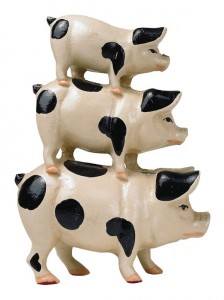
by Paul Brian Campbell,SJ
Sant Kabir was a 16th century mystic-poet revered by both Muslims and Hindus in India.
All his life, he maintained his humble trade as a weaver, living in a hut at the edge of the village. People would come from across India to ask him questions or hear him recite his heart-thrilling poetry, and he would comply joyfully, without interrupting his weaving work.
A group of Muslim scholars were not happy with his ecumenical approach, and decided to test his views in order to ascertain whether he was really Muslim or not. They informed Kabir of their intention and he happily invited them to come to his house the following day.
That evening, Kabir bought a herd of pigs (animals considered impure in Islam) and tied them to a post in front of his door. When the Muslim scholars arrived the next day, they had to push their way through a boisterous herd of pigs before reaching Kabir’s door.
They immediately started complaining and heaping harsh criticism on Kabir demanding to know how he could live in such filth. They thought their reception was disgusting and disrespectful.
Kabir replied calmly, “My learned and esteemed friends, I left my pigs outside, but you brought yours inside.”
The Explanation of the Parable of the Weeds
The Lord had spoken to the multitude in parable that He might induce them to ask Him of their meaning yet, though He had spoken so many things in parables no man had yet asked Him anything, and therefore He sends them away. Then Jesus sent the multitude away, and went into the house. None of the Scribes followed Him here, from which it is clear that they followed Him for no other purpose than that they might catch Him in His discourse.
Before, though desirous to learn, the Apostles had feared to ask; but now they ask freely and confidently because they had heard, “To you it is given to know the mystery of the kingdom of heaven”; and therefore they ask when alone, not envying the multitude to whom it was not so given. They pass over the parables of the leaven and the mustard seed as plain; and ask concerning the parable of the weeds, which was similar with the earlier parable concerning the seed, and shows somewhat more than that. And accordingly the Lord expounds it to them, as it follows, “He answered and said to them, ‘He that sows the good seed is the Son of man'”.
The field is the world. Seeing it is Jesus that sows His own field, it is plain that this present world is His. It follows, The good seed are the children of the kingdom. Out of that kingdom in which are no offenses? The kingdom then is His kingdom which is here, namely, the Church.
The weeds the Lord expounds to mean, not as some interpret, that certain falsehoods inserted among the true Scriptures, but all the children of the Evil one, that is, the imitators of the fraud of the Devil. As it follows, The weeds are the children of the evil one, by whom He would have us understand all the wicked and impious.
Observe, He says, “Those that do iniquity”, not, “those who have done”; not because they who have turned to penitence, but only they that abide in their sins are to be delivered to eternal torments.


